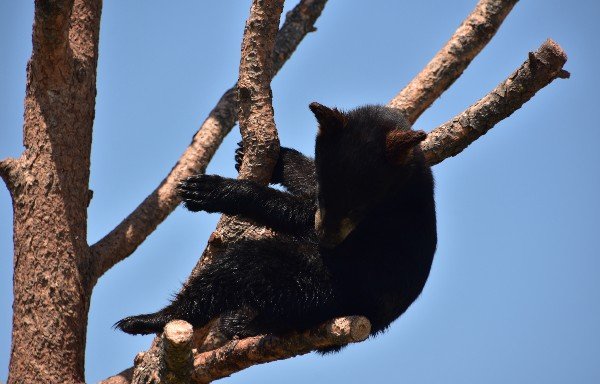One of the best parts of visiting Yellowstone National Park is seeing wild animals up close. When you’re here, you can see bears, elk, moose, wolves, bison, and otters in their natural habitats.
While you’re here, take a driving tour through the park with Yellowstone Bear World, a wildlife park that gives you the opportunity to safely view and photograph free-roaming animals. Yellowstone Bear World offers an educational experience appropriate for all ages.
Two Kinds of Bear Live in Yellowstone National Park
At Yellowstone Bear World, you’ll meet two types of bear: grizzly bears and black bears. Grizzly bears are often much larger than black bears and have brown fur that can range from very dark to fairly light, whereas black bears often have dark fur. However, while size and fur colors can often indicate the type of bear, these two indicators alone won’t always indicate a bear’s species. A large, light black bear can look like a grizzly, and a smaller, darker grizzly can be mistaken for a black bear.
Both Types of Bears can Climb Trees
Most people know that black bears can climb trees, but did you know grizzly bears are also capable of climbing trees too? This is unusual to see because their curved claws and weight often inhibit them from doing so, but you can still witness a grizzly climbing a tree when trying to escape a predator or to find food.
In addition, both types of bear are also capable swimmers. Black bears and grizzlies alike can often be seen in and around bodies of water to hunt for fish or cool themselves off during a warm summer day.
Bear Diets
Grizzlies and black bears’ diets often consist of both meat and plants. Interestingly, black bears are primarily vegetarians. About 80 to 85 percent of their diet consists of plants, grass, berries, and leaf buds. The other 20 to 15 percent is usually comprised of salmon, elk, moose calves, and rodents. A grizzly bear’s diet also consists of seeds, berries, deer, fungi, fish, and roots, but by an large a grizzly is considered more carnivorous than a black bear.
Both types of bear are opportunistic eaters, which means they eat what they can find. Sometimes, this means eating carrion, or animals that are already dead. Bears will also eat human food if they have the chance, so always be sure to take your trash out of the park with you and never leave food – or anything that can possibly smell like food – where a bear could be attracted to it.
Not All Black Bears are Black
Although the name could lead you to believe black bears always have black fur, their coats actually come in a variety of colors. Black bears can also have fur that come in shades of medium brown to a light cinnamon color. Although it is not common, some black bears may also be born with white fur.
To See Bears Up Close, Visit Yellowstone Bear World
Come meet Yellowstone’s animals in their natural environment. To learn more about our operating hours, admission rates, and what you can expect from your tour of the park, contact Yellowstone Bear World to speak with our knowledgeable, friendly staff.






